Berendsen H.0511294913, 0521542944, 0521835275
Table of contents :
Cover……Page 1
Half-title……Page 3
Title……Page 5
Copyright……Page 6
Contents……Page 7
Preface……Page 13
Units……Page 17
Atomic units……Page 19
Physical constants……Page 20
Part I A Modeling Hierarchy for Simulations……Page 31
1.1.1 Simulation of real systems……Page 33
1.1.3 Sophistication versus brute force……Page 34
1.2 A modeling hierarchy……Page 39
1.3 Trajectories and distributions……Page 43
1.4 Further reading……Page 44
2.1 The wave character of particles……Page 49
2.2 Non-relativistic single free particle……Page 53
2.3 Relativistic energy relations for a free particle……Page 55
2.4 Electrodynamic interactions……Page 61
2.4.1 Homogeneous external magnetic field……Page 63
2.4.2 Electromagnetic plane wave……Page 64
2.5 Fermions, bosons and the parity rule……Page 66
Exercises……Page 67
3.1 Introduction……Page 69
3.2 From quantum to classical dynamics……Page 72
3.3.1 Feynman’s postulate of quantum dynamics……Page 74
3.3.2 Equivalence with the Schrödinger equation……Page 77
3.3.4 Evaluation of the path integral……Page 78
3.3.5 Evolution in imaginary time……Page 81
3.3.6 Classical and nearly classical approximations……Page 83
3.3.7 The free particle……Page 85
3.3.8 Non-interacting particles in a harmonic potential……Page 87
3.3.9 Path integral Monte Carlo and molecular dynamics simulation……Page 91
3.4 Quantum hydrodynamics……Page 94
3.4.1 The hydrodynamics approach……Page 96
3.4.2 The classical limit……Page 99
3.5.1 Feynman-Hibbs potential……Page 100
3.5.2 The Wigner correction to the free energy……Page 102
3.5.3 Equivalence between Feynman–Hibbs and Wigner corrections……Page 103
3.5.4 Corrections for high-frequency oscillators……Page 104
3.5.5 The fermion–boson exchange correction……Page 105
Exercises……Page 106
4.1 Introduction……Page 107
4.2 Stationarysolutions of the TDSE……Page 108
4.3 The few-particle problem……Page 109
4.3.1 Shooting methods……Page 110
4.3.2 Expansion on a basis set……Page 112
4.3.3 Variational Monte Carlo methods……Page 114
4.3.4 Relaxation methods……Page 115
4.3.5 Diffusional quantum Monte Carlo methods……Page 119
4.3.6 A practical example……Page 122
4.3.8 Some applications……Page 126
4.4 The Born–Oppenheimer approximation……Page 127
4.5 The many-electron problem of quantum chemistry……Page 128
4.6 Hartree–Fock methods……Page 129
4.7 Density functional theory……Page 132
4.8 Excited-state quantum mechanics……Page 135
4.9 Approximate quantum methods……Page 136
4.10 Nuclear quantum states……Page 137
5.1 Introduction……Page 139
5.2 Quantum dynamics in a non-stationary potential……Page 144
5.2.1 Integration on a spatial grid……Page 145
5.2.2 Time-independent basis set……Page 149
5.2.3 Time-dependent basis set……Page 151
5.2.4 The two-level system……Page 153
5.2.5 The multi-level system……Page 158
5.3 Embedding in a classical environment……Page 159
5.3.1 Mean-field back reaction……Page 160
5.3.2 Forces in the adiabatic limit……Page 163
5.3.3 Surface hopping dynamics……Page 164
5.3.4 Other methods……Page 165
Exercises……Page 167
6.1 Introduction……Page 169
6.2 Boundary conditions of the system……Page 170
6.2.1 Periodic boundary conditions……Page 171
6.2.2 Continuum boundary conditions……Page 178
6.3 Force field descriptions……Page 179
6.3.1 Ab-Initio molecular dynamics……Page 181
6.3.2 Simple molecular force fields……Page 183
6.3.3 More sophisticated force fields……Page 187
6.3.4 Long-range dispersion interactions……Page 189
6.3.5 Long-range Coulomb interactions……Page 194
6.3.6 Polarizable force fields……Page 201
6.3.7 Choices for polarizability……Page 206
6.3.8 Energies and forces for polarizable models……Page 211
6.3.9 Towards the ideal force field……Page 213
6.3.10 QM/MM approaches……Page 218
6.4 Solving the equations of motion……Page 219
6.5 Controlling the system……Page 224
6.5.1 Stochastic methods……Page 226
6.5.2 Strong-coupling methods……Page 228
6.5.3 Weak-coupling methods……Page 229
6.5.4 Extended system dynamics……Page 231
6.5.5 Comparison of thermostats……Page 233
6.6 Replica exchange method……Page 234
6.7 Applications of molecular dynamics……Page 237
Exercises……Page 239
7.1 Introduction……Page 241
7.2 Free energy determination by spatial integration……Page 243
7.3 Thermodynamic potentials and particle insertion……Page 248
7.4 Free energy by perturbation and integration……Page 251
7.5 Free energy and potentials of mean force……Page 257
7.6.1 Harmonic wells……Page 261
7.7 Methods to derive the potential of mean force……Page 264
7.8 Free energy from non-equilibrium processes……Page 269
7.8.1 Proof of Jarzynski’s equation……Page 270
7.8.2 Evolution in space only……Page 274
7.8.3 Requirements for validity of Jarzynski’s equation……Page 275
7.8.4 Statistical considerations……Page 276
8.1 Distinguishing relevant degrees of freedom……Page 279
8.2 The generalized Langevin equation……Page 281
8.3 The potential of mean force……Page 285
8.4 Superatom approach……Page 286
8.5 The fluctuation–dissipation theorem……Page 287
8.6.1 Langevin dynamics in generalized coordinates……Page 293
8.6.2 Markovian Langevin dynamics……Page 295
8.7 Brownian dynamics……Page 298
8.8 Probability distributions and Fokker–Planck equations……Page 299
8.8.1 General Fokker–Planck equations……Page 300
8.8.2 Application to generalized Langevin dynamics……Page 301
8.9 Smart Monte Carlo methods……Page 302
8.10 How to obtain the friction tensor……Page 304
8.10.1 Solute molecules in a solvent……Page 305
8.10.2 Friction from simulation……Page 306
Exercises……Page 307
9.1 Introduction……Page 309
9.2 The macroscopic equations of fluid dynamics……Page 311
9.2.2 The equation of motion……Page 312
9.2.3 Conservation of linear momentum……Page 313
9.2.4 The stress tensor and the Navier–Stokes equation……Page 314
9.2.5 The equation of state……Page 315
9.2.6 Heat conduction and the conservation of energy……Page 317
9.3 Coarse graining in space……Page 318
9.3.1 Definitions……Page 320
9.3.2 Stress tensor and pressure……Page 321
9.3.3 Conservation of mass……Page 322
9.3.4 Conservation of momentum……Page 323
9.3.5 The equation of motion……Page 324
Exercises……Page 325
10.1 Introduction……Page 327
10.2 Connection to irreversible thermodynamics……Page 328
10.3 The mean field approach to the chemical potential……Page 331
11 Dissipative particle dynamics……Page 335
11.1 Representing continuum equations by particles……Page 337
11.2 Prescribing fluid parameters……Page 338
11.4 Applications……Page 339
Part II Physical and Theoretical Concepts……Page 343
12.1 Definitions and properties……Page 345
12.2 Convolution and autocorrelation……Page 346
12.3 Operators……Page 347
12.4 Uncertainty relations……Page 348
12.5.1 Square pulse……Page 350
12.5.2 Triangular pulse……Page 351
12.5.3 Gaussian function……Page 352
12.6 Discrete Fourier transforms……Page 353
12.7 Fast Fourier transforms……Page 354
12.8 Autocorrelation and spectral density from FFT……Page 355
12.9 Multidimensional Fourier transforms……Page 361
Exercises……Page 363
13.1 Maxwell’s equation for vacuum……Page 365
13.2 Maxwell’s equation for polarizable matter……Page 366
13.4 Potentials……Page 367
13.5 Waves……Page 368
13.6 Energies……Page 369
13.7 Quasi-stationary electrostatics……Page 370
13.7.1 The Poisson and Poisson–Boltzmann equations……Page 371
13.7.2 Charge in a medium……Page 373
13.7.3 Dipole in a medium……Page 376
13.7.4 Charge distribution in a medium……Page 378
13.7.5 The generalized Born solvation model……Page 381
13.8 Multipole expansion……Page 383
13.8.1 Expansion of the potential……Page 385
13.8.2 Expansion of the source terms……Page 387
13.10 Potentials and fields in periodic systems of charges……Page 392
13.10.1 Short-range contribution……Page 394
13.10.2 Long-range contribution……Page 395
13.10.3 Gaussian spread function……Page 398
13.10.4 Cubic spread function……Page 399
13.10.5 Net dipolar energy……Page 401
13.10.6 Particle–mesh methods……Page 403
13.10.7 Potentials and fields in periodic systems of charges and dipoles……Page 405
Exercises……Page 406
14.1 Introduction……Page 409
14.2 Definitions……Page 410
14.3 Hilbert spaces of wave functions……Page 411
14.4 Operators in Hilbert space……Page 412
14.5 Transformations of the basis set……Page 414
14.6 Exponential operators and matrices……Page 415
14.6.1 Example of a degenerate case……Page 419
14.7.1 Equations of motion for the wave function and its representation……Page 420
14.7.2 Equation of motion for observables……Page 421
14.8 The density matrix……Page 422
14.8.2 The density matrix in coordinate representation……Page 424
15.1 Introduction……Page 427
15.2 Lagrangian mechanics……Page 428
15.3 Hamiltonian mechanics……Page 429
15.4 Cyclic coordinates……Page 430
15.5 Coordinate transformations……Page 431
15.6.1 Translation……Page 433
15.6.2 Rotation……Page 434
15.7 Rigid body motion……Page 435
15.7.1 Description in terms of angular velocities……Page 438
15.7.3 Euler angles……Page 442
15.7.4 Quaternions……Page 443
15.8 Holonomic constraints……Page 447
15.8.2 Coordinate resetting……Page 449
15.8.3 Projection methods……Page 451
16.1 Introduction and history……Page 453
16.2 Definitions……Page 455
16.2.1 Partial molar quantities……Page 457
16.3 Thermodynamic equilibrium relations……Page 459
16.3.1 Relations between partial differentials……Page 461
16.4 The second law……Page 462
16.5 Phase behavior……Page 463
16.6 Activities and standard states……Page 465
16.6.1 Virial expansion……Page 466
16.7 Reaction equilibria……Page 467
16.7.1 Proton transfer reactions……Page 468
16.7.2 Electron transfer reactions……Page 469
16.8 Colligative properties……Page 471
16.9 Tabulated thermodynamic quantities……Page 473
16.10.1 Irreversible entropy production……Page 474
16.10.2 Chemical reactions……Page 478
16.10.3 Phenomenological and Onsager relations……Page 479
16.10.4 Stationary states……Page 480
Exercises……Page 481
17.1 Introduction……Page 483
17.2 Ensembles and the postulates of statistical mechanics……Page 484
17.2.1 Conditional maximization of H……Page 486
17.3.1 Temperature and entropy……Page 487
17.4 Other ensembles……Page 489
17.4.1 Ensemble and size dependency……Page 492
17.5 Fermi–Dirac, Bose–Einstein and Boltzmann statistics……Page 493
17.5.1 Canonical partition function as trace of matrix……Page 494
17.5.2 Ideal gas: FD and BE distributions……Page 495
17.5.3 The Boltzmann limit……Page 498
17.6 The classical approximation……Page 502
17.7 Pressure and virial……Page 509
17.7.1 The mechanical pressure and its localization……Page 511
17.7.2 The statistical mechanical pressure……Page 514
17.8 Liouville equations in phase space……Page 522
17.9.1 Canonical distribution in cartesian coordinates……Page 527
17.9.2 Canonical distribution in generalized coordinates……Page 528
17.9.3 Metric tensor effects from constraints……Page 529
17.10 The generalized equipartition theorem……Page 532
Exercises……Page 534
18.1 Introduction……Page 535
18.2 Linear response relations……Page 536
The Kramers–Kronig relations……Page 539
18.3 Relation to time correlation functions……Page 541
18.3.1 Dielectric properties……Page 544
18.3.2 Viscosity……Page 546
18.4 The Einstein relation……Page 548
18.5 Non-equilibrium molecular dynamics……Page 549
18.5.2 Diffusion……Page 550
18.5.3 Thermal conductivity……Page 551
Exercises……Page 552
19.1 Introduction……Page 553
19.2 Cubic splines through points……Page 556
19.3 Fitting splines……Page 560
19.4 Fitting distribution functions……Page 566
19.5 Splines for tabulation……Page 569
19.6 Algorithms for spline interpolation……Page 572
19.7 B-splines……Page 578
References……Page 587
Index……Page 617
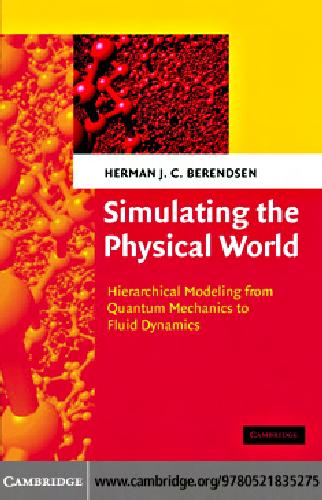

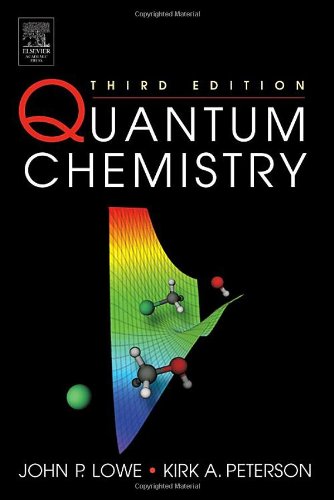
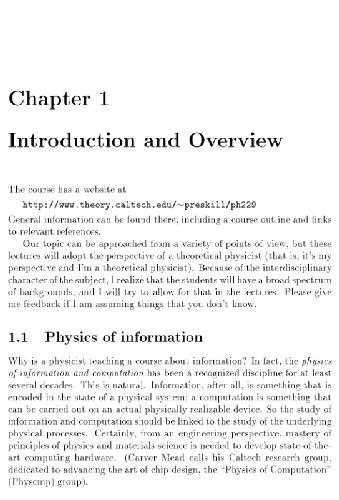
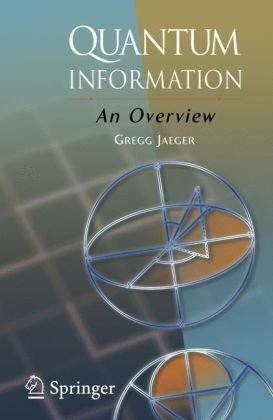

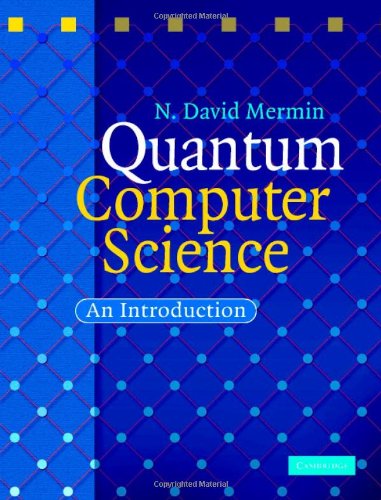
Reviews
There are no reviews yet.